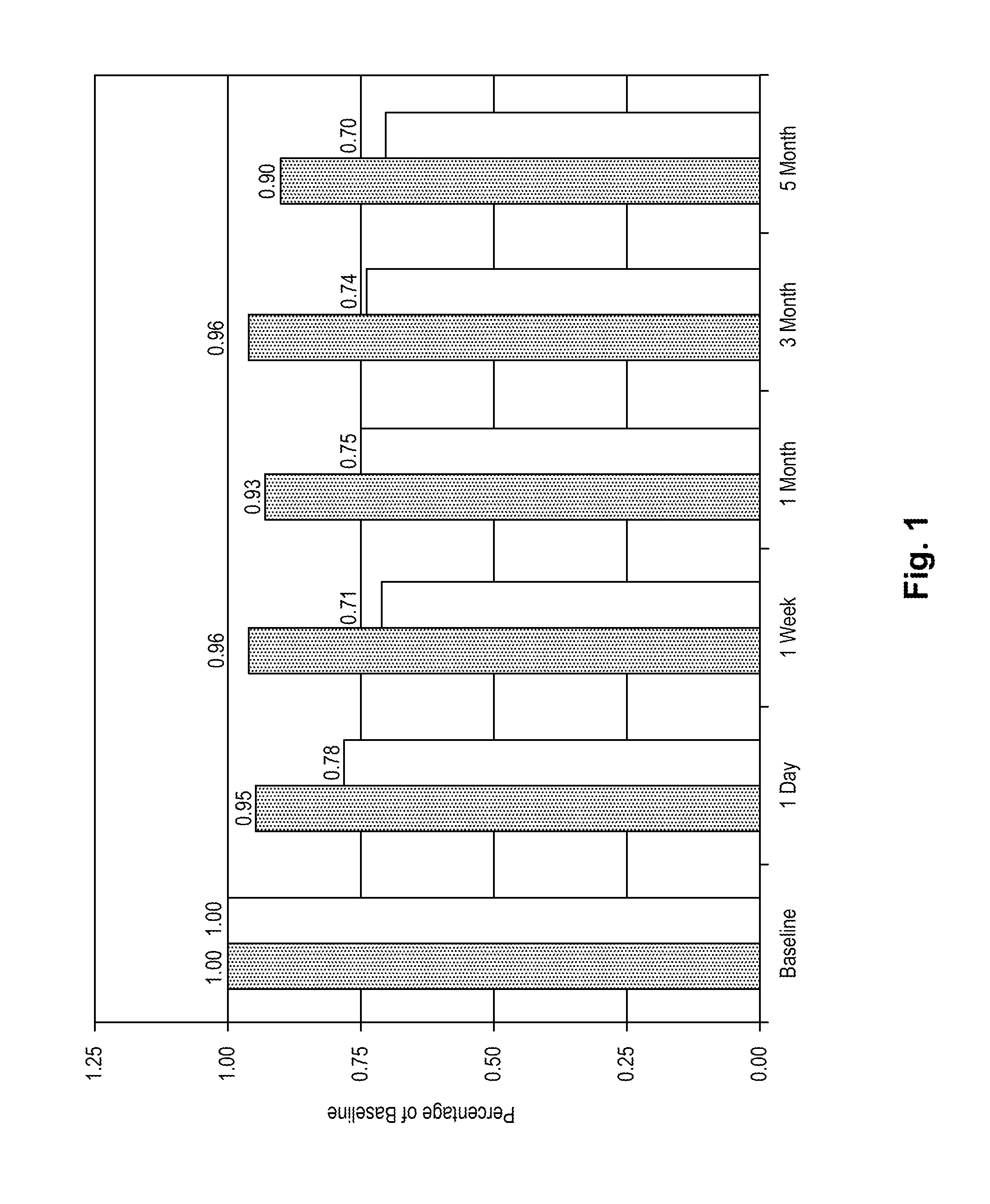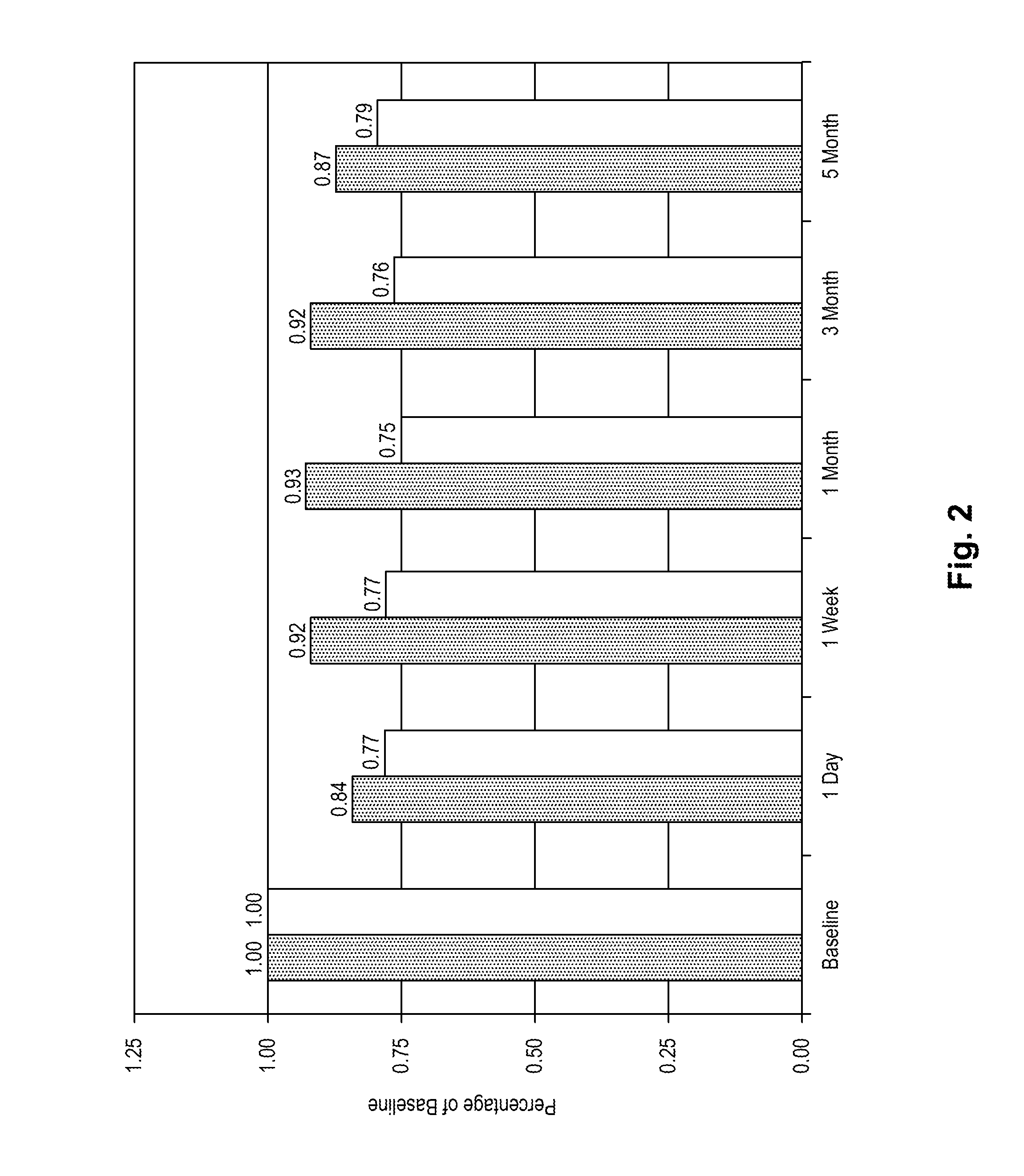Methods for Stabilizing Corneal Tissue
a corneal tissue and tissue technology, applied in the direction of cardiovascular disorders, drug compositions, peptide/protein ingredients, etc., can solve the problems of regression and corneal haze, corneal weakening, vision impairment, etc., to improve visual acuity and improve the outcome
- Summary
- Abstract
- Description
- Claims
- Application Information
AI Technical Summary
Benefits of technology
Problems solved by technology
Method used
Image
Examples
example 2
Toxicity Evaluation of Decorin in the Feline Eye
[0074]The purpose of the following evaluation was to determine if (1) there is toxicity associated with the use of decorin on the eye; (2) assess the penetration of decorin into the cornea; and (3) quantitate decorin in the cornea following exogenous application of decorin.
[0075]One, three, and five daily applications of decorin were assessed using female cats (6 months to 2 years of age) with normal corneas as the model system. The decorin was obtained as a dry powder (Sigma Chem. Co., Milwaukee, Wis.) and reconstituted in a 0.1 M phosphate buffer. In order to perform the microscopic evaluations, decorin was labeled with Oregon Green 514 using a commercially available kit from Molecular Probes.
[0076]Five cats were used in the study. Each cat was sedated prior to topical application of medication or photography of the eye. All animals received an ocular examination and photographs (whole eye, slit lamp, and endothelial cells) prior to ...
example 3
Measurement of Corneal Hysteresis in the Feline Model
[0083]The effects of decorin (human recombinant decorin provided by Catalent, Inc., Wisconsin) application on the biomechanical properties of the feline cornea were measured in five animals in a study performed at the Dartmouth-Hitchcock Surgical Research Center, Lebanon, N.H., Chemical agents were administered to the treated eyes to enhance decorin penetration and to dissociate proteoglycan bridges between collagen fibers, as referenced in paragraph [062]. The biomechanical integrity of the cornea was measured using the Reichert Ocular Response Analyzer (ORA). The ORA utilizes a dynamic by-directional applanation process to measure corneal hysteresis (CH).
[0084]Table 2 shows the results from this study.
TABLE 2Stabilization of Cornea Biomechanical propertiesfollowing Application of Decorin SolutionBeforeAfter decorinAnimal #Decorin (CH)Treatment (CH)After 21 DaysAHH35.507.437.50QJD43.906.306.90RAF63.135.186.20BEA43.654.806.20IRH67...
example 4
Ocular Irritation Studies in Humans
[0086]In safety trials with live human subjects in Shanghai, People's Republic of China in August 2004, 2.9 mg / ml of decorin in buffered saline solution was administered by the applicator method. To avoid discomfort from placing the applicator on the eye, proparican hydrochloride (0.5%) was first administered as an anesthetic. It appears that the clinician and the patient are most comfortable with a holding period of the applicator on the eye limited to about twenty (20) seconds, so that if the full dose cannot be delivered in that interval, repeat applications following one another over several minutes would be indicated. Work to date has been with a single application of a limited concentration of decorin only, however patients show no adverse effects and express no discomfort whatsoever. This type of safety study has been conducted on adolescent Chinese Ortho-K patients on three occasions. None of the safety tests suggest any adverse indications...
PUM
| Property | Measurement | Unit |
|---|---|---|
| diameter | aaaaa | aaaaa |
| diameter | aaaaa | aaaaa |
| pH | aaaaa | aaaaa |
Abstract
Description
Claims
Application Information
 Login to View More
Login to View More - R&D
- Intellectual Property
- Life Sciences
- Materials
- Tech Scout
- Unparalleled Data Quality
- Higher Quality Content
- 60% Fewer Hallucinations
Browse by: Latest US Patents, China's latest patents, Technical Efficacy Thesaurus, Application Domain, Technology Topic, Popular Technical Reports.
© 2025 PatSnap. All rights reserved.Legal|Privacy policy|Modern Slavery Act Transparency Statement|Sitemap|About US| Contact US: help@patsnap.com


